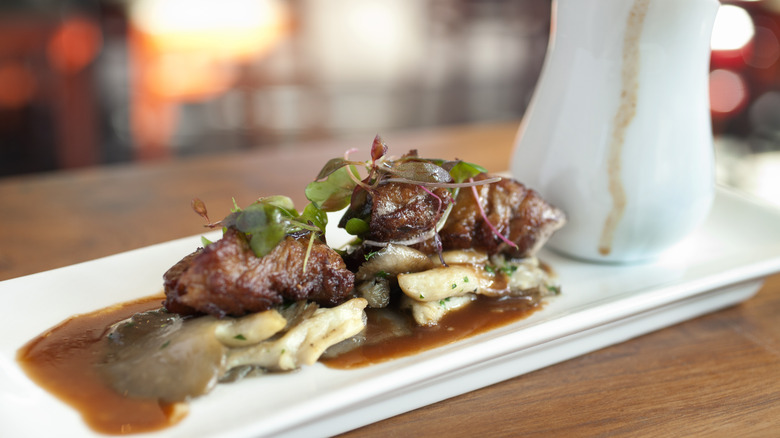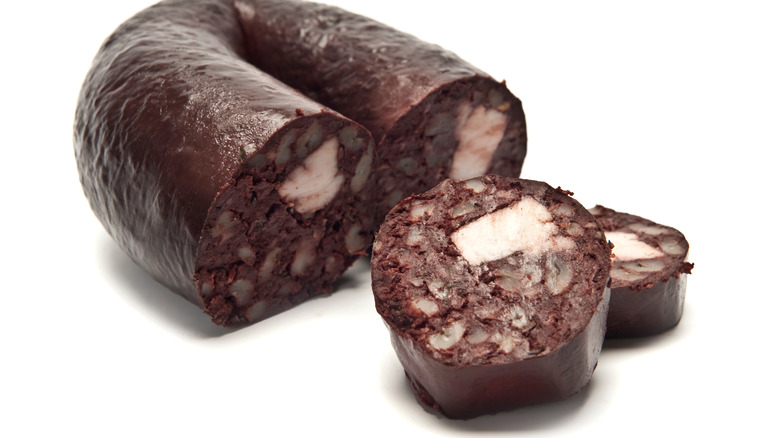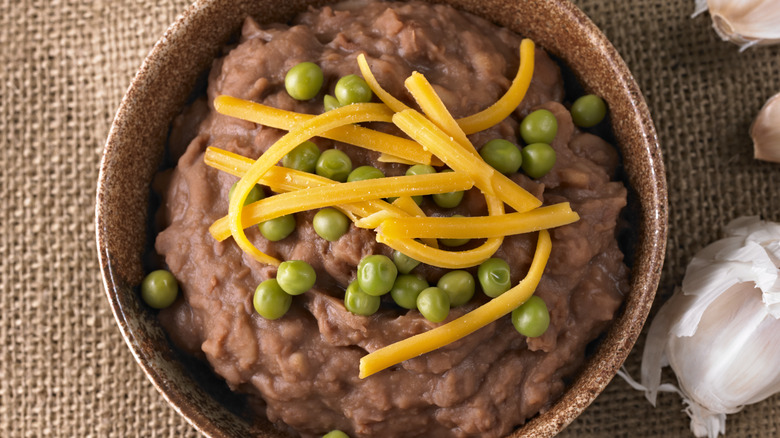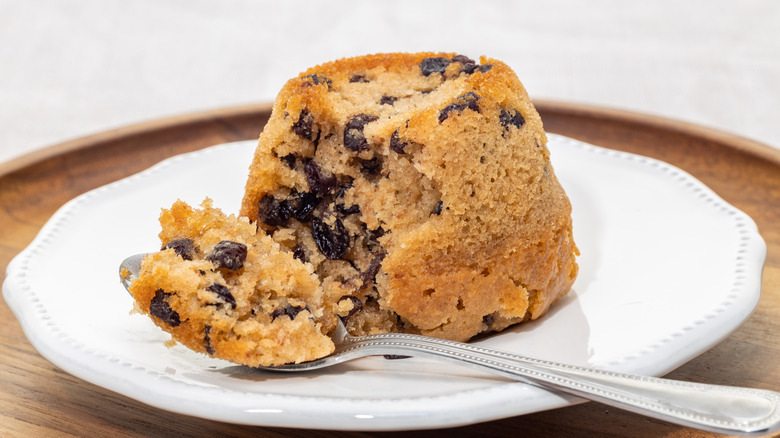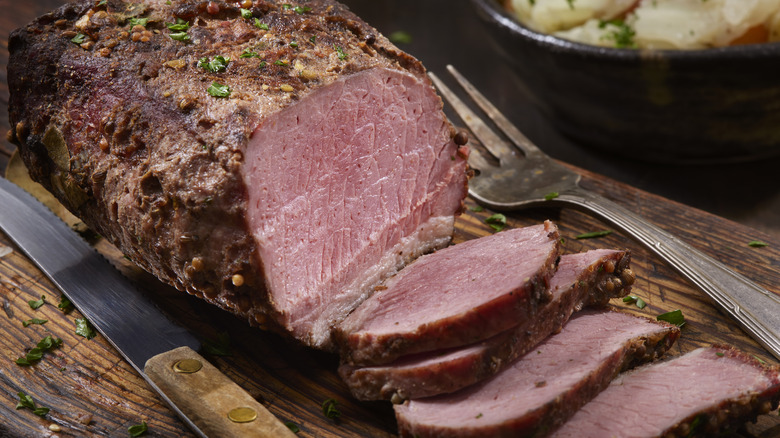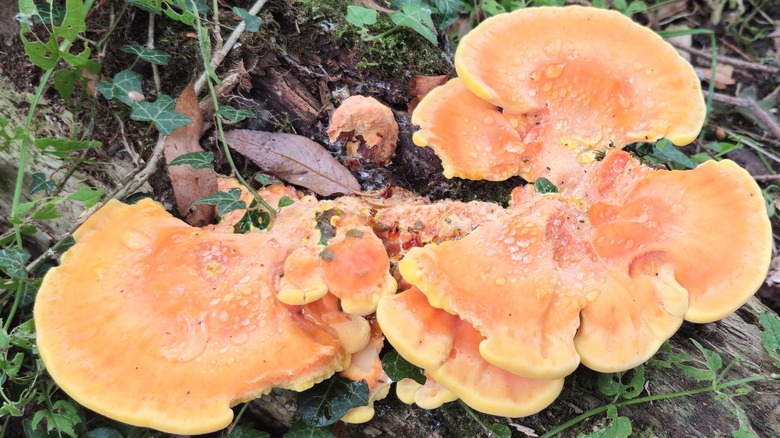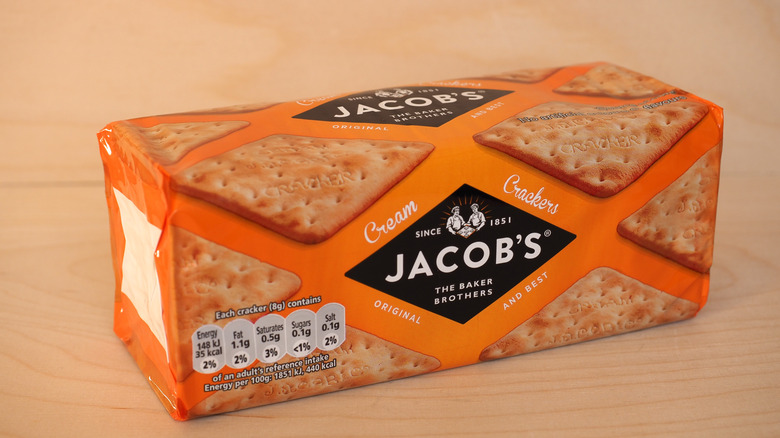The culinary world is full of mysteries and surprises. Beyond unexpected flavor combinations and dubious historical origins, some foods aren’t what they seem. More specifically, some kitchen creations bear names that have very little to do with their actual ingredients, leading to both amusing misunderstandings and lively debates.
The reasons behind the misleading names vary widely and are often as interesting as the foods themselves. Some dishes are simply named after their appearance, rather than their actual ingredients. Others owe their names to creative marketing strategies designed to make them stand out from the pack. Still others are given deceptive names due to translation errors. Whatever the reason, it’s not uncommon for food enthusiasts to discover that a certain culinary title may not in fact reflect the real nature of the food in question.
Keen to find out more about some of the most iconic foods and drinks that defy expectations? Take a look at our roundup of culinary creations with misleading names!
Welsh rabbit
Sometimes called Welsh rarebit, Welsh rabbit has absolutely nothing to do with rabbit meat. Perfectly suitable for vegetarians, Welsh rabbit consists of toasted bread covered in a cheddar cheese sauce, mustard, Worcestershire sauce, cayenne, and paprika. The dish also sometimes comes with a poached egg, in which case it’s no longer a Welsh rarebit but a golden buck. Meanwhile, if you throw a little bacon into the mix, the dish becomes a Yorkshire buck.
Commonly enjoyed in British pubs alongside an ale, the recipe for Welsh rabbit was first documented in “The Art of Cookery Made Plain and Easy” in 1747. The cookbook also shared recipes for similar toasted treats named Scotch rabbit and English rabbit. While the origin of the name Welsh rabbit isn’t clear, some believe that the dish was given its meaty name due to the fact that Welsh peasants used to substitute meat — which they couldn’t afford — with cheese. Meanwhile, others speculate that the evocative moniker may have been coined by the English as a subtle way of making fun of their neighbors.
Sweetbreads
The term sweetbreads conjures images of sugary pastries like Danishes and brioche rolls. In reality, it actually refers to something entirely different. Far from an enticing dessert you may enjoy after your main meal at a restaurant, sweetbreads refer to organ meat, specifically the thymus (a gland in the throat) or pancreas (offal near the stomach) of young animals like calves or lambs, although they also sometimes come from pigs. Praised by adventurous diners, sweetbreads have a smooth and creamy texture and a mild, slightly sweet flavor.
Although sweetbreads might taste sweeter than other muscle flesh, the reason for their name probably goes beyond just their taste. Some believe that the dish may have gotten the other part of its moniker from the 16th-century Old English word “bræd,” which was used to describe meat. Others speculate that the word “bread” could derive from “brede,” an Old English term for roasted meat.
To make sweetbreads, the thymus and pancreas are soaked in cold water, milk, or buttermilk to remove any impurities. They are then blanched in boiling water before being thrown into ice water to firm up. Next, the offal is cleaned of any excess fat, gristle, or membranes. After sweetbreads are thoroughly cleaned, they can be prepared in a variety of ways, such as braising, grilling, searing, or frying.
Black pudding
There is nothing sweet, creamy, or chocolaty about black pudding, which is precisely why you won’t find it in the dessert section of a restaurant menu. Instead, it is far more likely to appear on a hearty breakfast plate, especially if you’re dining in Great Britain. Frequently paired with savory accompaniments like fried eggs or sautéed mushrooms, black pudding is usually made from pork blood mixed with various herbs and spices, and either oatmeal or barley. Depending on the region, blood from animals such as cows and sheep may also be used, giving the sausages a subtly different flavor.
Black pudding has a long history, even earning a mention in Homer’s 800 B.C. classic “The Odyssey.” In Britain, the dish, which was known as “blak podyngs,” was first documented in the mid-15th century. This isn’t surprising given that animal blood was probably readily available to many families as a byproduct of livestock farming. While back then the bloody mixture was stuffed into intestines, today it’s normally encased in tripe skins.
Head cheese
Contrary to what its name suggests, head cheese has nothing to do with dairy. Rather, it’s a meat product — specifically, a dish made primarily from the head of a pig, although the feet, tongue, and heart are also sometimes thrown into this meaty mix. To make this specialty, the head is normally simmered for hours. After it becomes gelatinous in consistency — thanks to its collagen — the meaty bits are stuffed into sausage casings. The mixture can also be used to make spreads and sliceable loaves or be molded into small cubes. Head cheese can be served cold on sandwiches or alongside more common cold cuts on charcuterie boards.
While the precise origins of head cheese are unknown, a version of the dish appeared in a 1732 British cookbook entitled “The Compleat City and Country Cook.” The minimalist recipe called for hog’s head and salt and instructed that after the mixture has been boiled, it should be put in a cheese press. Some speculate that this is where the dish got its unusual name. Meanwhile, others suggest that the dish has been named after the Dutch word “hoofdkaas,” which translates to head cheese.
Rocky Mountain oysters
Those seeking the briny flavor and silky texture of ocean-fresh oysters might want to give Rocky Mountain oysters a miss. Though they may be a delicacy for some, Rocky Mountain oysters have little to do with shellfish. This is because, instead of being harvested from the sea or even oyster beds, Rocky Mountain oysters hail from an entirely different setting — the farm. This is where livestock — or more precisely cattle, sheep, or other animals — supply the main ingredient of this somewhat unusual dish: testicles. Just so you are not caught off guard, Rocky Mountain oysters also go by a number of aliases, including prairie oysters, dusted nuts, calf fries, cowboy caviar, and swinging beef.
Sourced from castrated livestock, Rocky Mountain oysters are normally battered and fried. However, this isn’t always the case. These protein-rich morsels can also be grilled, poached, broiled, and even tossed into a stir-fry. Today, the nuggets are particularly popular in Colorado, Montana, and parts of Canada, although Montana’s annual Testicle Festival wrapped up in 2018 after more than three decades of celebrating this unique delicacy.
Refried beans
Refried beans are a staple in Mexican restaurants, and for good reason. This delicious bean putty is a welcome addition to the bolder and spicier flavors of Mexican and Tex-Mex cuisines. While their name implies otherwise, refried beans are not actually fried twice. Refried beans, which are usually made from pinto beans (or sometimes black beans), are cooked in water until soft and then mashed and fried with flavorful ingredients such as onion, garlic, and spices. The water in which the beans were boiled is also sometimes added to this mix.
While the origins of some culinary terms on this list are unclear, we know precisely how refried beans got their misleading name. Refried beans is an inaccurate translation of the Spanish words “frijoles refritos,” which actually translate to “well fried.” This misunderstanding isn’t surprising since to English speakers, the prefix “re” means again, whereas in Spanish, it means “very.”
Egg cream
Contrary to what its name suggests, egg cream contains three ingredients, none of which include eggs or cream. That said, the frothy beverage does contain dairy in the form of whole milk, and its other two components are chocolate syrup and seltzer. So, what’s the deal? Why does this dessert boast a name that promises both eggs and cream?
Egg creams lived up to their name when they first appeared on the market in the 19th century, as they contained both eggs and cream. In fact, in the 1860s, when soda fountains were all the rage, the ingredients were incorporated into the mix to turn soda into a sort of “liquid lunch” that wasn’t just delicious but also filling. By the time the 20th century rolled around, the eggs and cream were gradually phased out as a cost-cutting measure. After Fox invented U-Bet syrup in 1903, these ingredients were eventually replaced by cheaper flavored syrups, which are still in use to this day.
Ladyfingers
Also known by a host of other names, including sponge fingers, Savoy biscuits, and Boudoir biscuits, ladyfingers derive their name from their distinctive shape, rather than actual fingers or ladies. Long, slender, and oval-shaped, ladyfingers are light and crumbly biscuits prepared with dough that includes separately beaten egg whites — a technique that makes them incredibly airy. Today, ladyfingers are also often sprinkled with sugar. When not enjoyed on their own, these delicate cookies are used in French and Italian desserts like tiramisù and soufflé.
Ladyfingers likely had their beginnings in the House of Savoy in the 11th century in France. According to some accounts, the recipe for the delicate dessert made its way across Europe through the lineage of Bertha of Savoy. According to another story, Czar Peter the Great of Russia and his wife were so impressed with ladyfingers when visiting Louis XV of France that they brought one of the country’s bakers back to St. Petersburg. In the U.S., most commercially available ladyfingers have been produced since 1901 by Specialty Bakers, a brand aptly dubbed “the Ladyfinger Specialist.”
Spotted dick
Also sometimes called spotted dog and railway cake, spotted dick is a steamed pudding peppered with dried fruit like raisins or currants. The dessert has a consistency similar to that of sponge cake thanks to the addition of suet. In a pinch, the suet is sometimes replaced with butter. The dessert is often served with custard, which — along with the dried fruit — imbues the plate with a touch of sweetness.
While the first part of spotted dick’s name can be explained by the dessert’s speckling of dried fruit, the second part of the dessert’s playful name is more difficult to pin down. The prevailing theory is that the word “dick,” or more precisely “puddick,” was a widely used term for pudding in 19th-century U.K. While culinary terminology may have changed somewhat since then, the attention-grabbing name has withstood the test of time. However, not everybody has been happy with the quirky moniker. In 2018, The Telegraph reported that the Strangers’ Dining Room in the House of Commons renamed the dessert “spotted Richard” to avoid potential embarrassment among members of Parliament and guests.
Truffle oil
Celebrated for their intense and earthy flavor and aroma, truffles are not easy to cultivate and harvest. In the wild, truffles grow beneath the ground in close proximity to certain trees and are usually foraged with the help of pigs or trained dogs. The seasonal fungus is also tricky to cultivate in controlled conditions. This limited supply gives truffles their steep price tag. To circumvent this scarcity, chefs and producers have come up with the next best thing — truffle oil.
While the most authentic truffle oil is indeed infused with pieces of truffle, this is not always the case. To make it more affordable, truffle oil manufacturers often use synthetic compounds to mimic the taste and aroma of the prized delicacy. One such addition is 2,4-dithiapentane, which replicates the aroma of real truffles without giving the product the complexity of real truffles. Unfortunately, checking the label on a bottle of truffle oil is unlikely to help because in the U.S., 2,4-dithiapentane also goes by the names “truffle aroma,” “truffle flavor,” or “truffle concentrate.” The color of truffle oil is also unlikely to indicate authenticity because it depends on the type of oil used rather than the presence of truffles.
Corned beef
With a rich, savory flavor and a tender, juicy texture, corned beef is a beloved comfort food that pairs well with fried potatoes and cabbage steaks. However, the deliciousness of corned beef has a lot to do with the beef brisket rather than corn. In fact, the word “corned” in the name of the dish refers to the coarse salt used to cure the meat. Interestingly, corned beef is one of the traditional ingredients in a British dish called bubble and squeak, a fry-up that also includes potatoes and cabbage.
In the U.S., corned beef is typically associated with St. Patrick’s Day. This is for several reasons. Ireland became a major exporter of corned beef after the Cattle Acts of 1663 and 1667 restricted the export of live cattle to England. With plenty of cattle and salt on their hands, the Irish started curing the beef to circumvent the law, becoming a major exporter of corned beef. In addition, in the mid-19th century, Irish immigrants in the U.S. adopted the dish as an affordable substitute for bacon and ham. It certainly didn’t hurt that, at the time, many Irish immigrants shared neighborhoods with Jewish communities and could easily get their hands on kosher meats like brisket.
Chicken of the woods
The phrase chicken of the woods conjures up images of feathered hens wandering among towering trees deep in the forest. Alternatively, one might assume that chicken of the woods could refer to a poultry dish that evokes the flavors of the forest with wild herbs and mushrooms. Neither interpretation of the culinary term holds true because chicken of the woods is in fact a mushroom.
As expected, chicken of the woods looks nothing like chicken. The fungus, which grows out of tree trunks, has a shell-like appearance and is bright orange in color. It’s when torn apart and cooked that the origin of the mushroom’s name becomes apparent. Whether sautéed with a little butter or incorporated into a stew or a stir-fry, chicken of the woods has a tender and fibrous poultry-like texture. This, coupled with a delicious umami flavor, makes chicken of the woods a wonderful meat substitute for vegetarians.
Chicken of the woods shouldn’t be confused with another type of fungi called hen of the woods. Also known as the maitake mushroom, hen of the woods is dark gray in color and has a frilly texture. Just like chicken of the woods, hen of the woods has a meaty texture and an umami flavor that works well in sautéed, pan-fried, and grilled dishes.
Cream crackers
Many of us are familiar with cream crackers — these square biscuits with rounded corners are light and crunchy in texture, thanks in part to their distinctive air pockets. However, despite their creamy flavor — and name — this savory snack doesn’t contain any actual cream. Instead, cream crackers are made with five simple ingredients — flour, salt, baking soda, yeast, and vegetable oil. Although we can’t be certain how the term “cream” originated, some believe that it refers to the biscuits’ production method, which involves creaming the water and flour mixture with oil.
Cream crackers have a surprisingly long history. The crunchy treats were created by the Jacob’s Baking Company in 1885 in Dublin as a convenient snack that could be taken on long ship voyages without spoiling. The crackers also gained fans on land, spreading across Europe. In fact, by 1893, the biscuits became so popular that Prince Frederick Leopold of Germany is said to have ordered six tons of the crispy snack. Today, cream crackers remain as beloved as ever, serving as the perfect vehicle for cheeses, cured meats, or jams.
Gunpowder tea
Contrary to what its name implies, there is absolutely no gunpowder in gunpowder tea. Instead, the brew, which originated in China in the seventh century, is composed of the same leaves as green tea. The difference lies in the production process, by which the leaves are withered, steamed, and carefully rolled into small, tight pellets. It’s precisely these tiny nuggets that have given rise to the tea’s name. This rolling technique also helped to keep the tea fresh and tightly packed during transportation.
Originally called zhu cha or “pearl tea” in Chinese, Gunpowder tea acquired its distinctive name in the 19th century after a British clerk was struck by how much the tea pellets looked like gunpowder grains. Because the tea is so tightly packed, the little pellets unfurl when steeped, giving the beverage its potent flavor — only half a teaspoon of tea is required to produce a brew. When prepared, gunpowder tea has a distinctly sweet and mildly pungent taste with hints of smoke.











